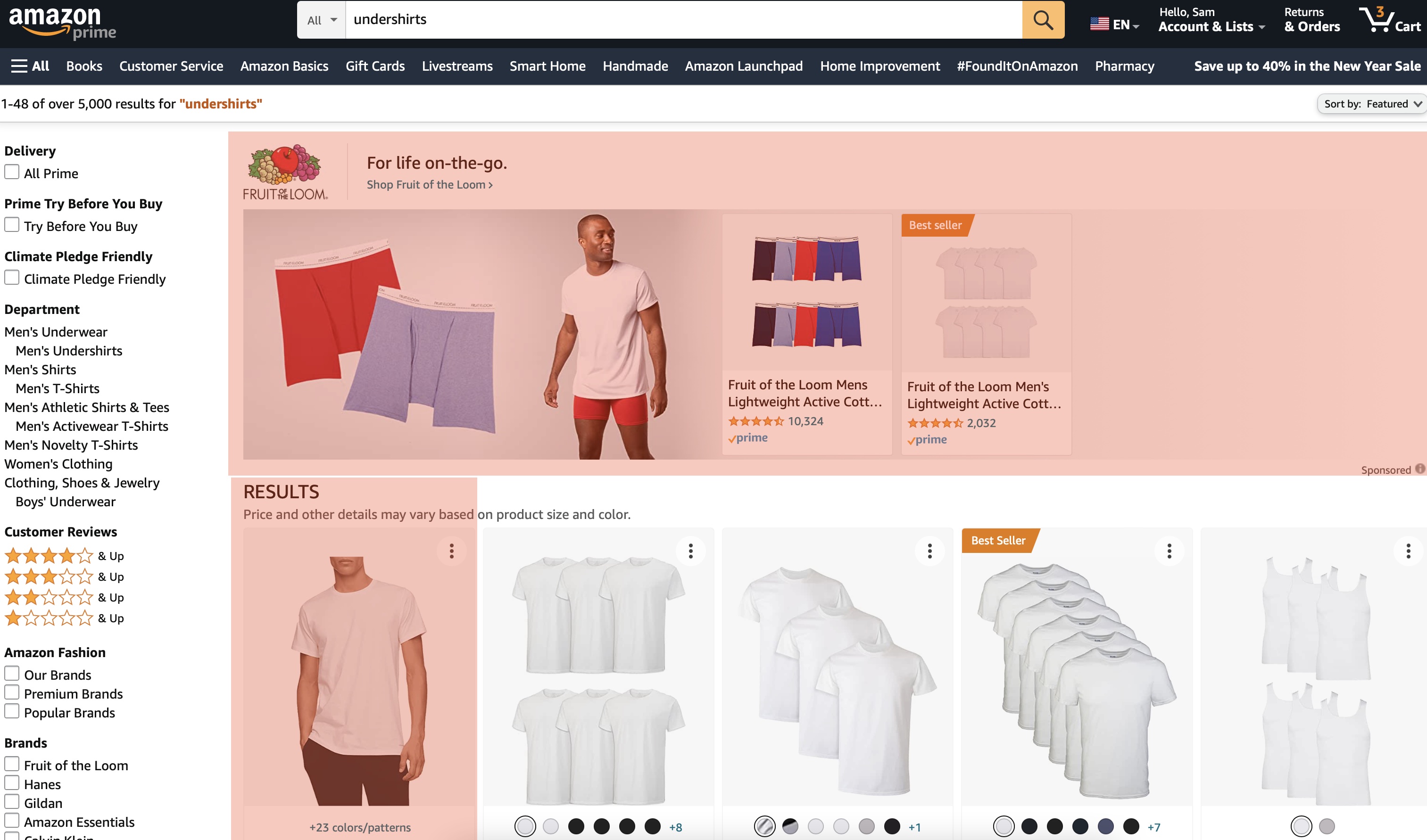The extravagance of Amazon Ads
Sam Kaplan
January 9, 2023
In 2017, Amazon’s ad sales generated $2.8 billion while growing 61% year over year. At the annual OP1 planning meeting that year, Jeff Bezos asked a simple question “I wonder what [retail] profitability was in 2017 without advertising?” (Amazon Unbound). Amazon is willing to lose money in new businesses, but not in its core retail business. The luxuriously pure margin advertising business was sugar coating larger weaknesses in Amazon’s core. So, why is Amazon advertising so lucrative, and why was Jeff Bezos so keen to see it separated from the retail unit’s profitability?
To tackle these questions, we need to start with how ads are used almost everywhere else besides Amazon. If you open an advertising textbook, you’ll learn that ads have two main purposes: brand awareness and direct response. Brand awareness is why Chase Bank bought the naming rights to the Chase Center, or why you see a million ads for Coca-Cola every day. They don’t expect to get any benefits right away, but you might remember it the next time you go to the grocery store or need to take out a loan. On the other side of the coin is direct response, you see an Instagram ad for a cute new top, and you buy it right away.
Amazon is in many ways a direct response advertiser’s dream. Customers are primed to buy with just one click after seeing the ads. And, undoubtedly, Amazon ads allow advertisers to signal the quality of their new products and target them to customers. But, Amazon ads aren’t just found advertising new products to brand new customer bases. If you search something as basic as “undershirts”, you’ll find that 60% of the page is sponsored.
And, are these unusual brands that we’d be unlikely to see without ads? No, it’s Fruit of the Loom and Calvin Klein - two of the most popular brands anyway. I just tried this with a few more. “Bracelet”, “confetti”, “mirror,” and “packing tape” all show the same pattern.
So, if Amazon ads aren’t about helping consumers find new products, then what are they about? Well, I think it comes down to the simple fact that being first really matters. For most basic items, we adopt a “good enough” mentality. For instance, with undershirts, I’m not going to spend a million hours going through every listing. I look at the first one and it’s good enough, so I buy it, and move on with my life. If I’m paying $32.20 for a pack of three undershirts, I’m not really going to care that there’s a pack selling for $30 that’s just as good.
But, the merchant cares. The merchant cares a lot, because for a high volume business like selling undershirts $2.20 could be their entire margin. So, here’s where we get to the core and the extravagance of Amazon ads. Amazon makes a large percentage of their advertising revenue by squeezing merchants of every drop of margin that they can get away with. Amazon knows they completely own the relationship with the consumer, so why let a company make extra money off the fact that they happen to rank higher in the search results. In many cases, Amazon ads doesn’t change anything about the quality of product customers get. They just change who gets to keep the profits.
I love digital advertising. Everyone on Earth now has easy access to the most sophisticated targeting system in history. There’s a huge difference between watching the long, boring, irrelevant ads you see on tv, and scrolling through a news feed with highly relevant and personalized ads. At the end of the day, advertising should be about connection. Helping consumers discover products and companies discover consumers. So, it pains me to see Amazon’s advertising revenue increasingly compared with Facebook, Google, and other platforms. In 2017, when Jeff first asked his question, Amazon brought in $2.8 billion of ad revenue. Four years later, this increased 11x to $31.2 billion (!). At the same time, the fees sellers paid (inc. advertising) went from 21.4% to 34.5% (10k, Marketplace Pulse). Wow. So, let it be said once and for all: Amazon ads are not ads.
